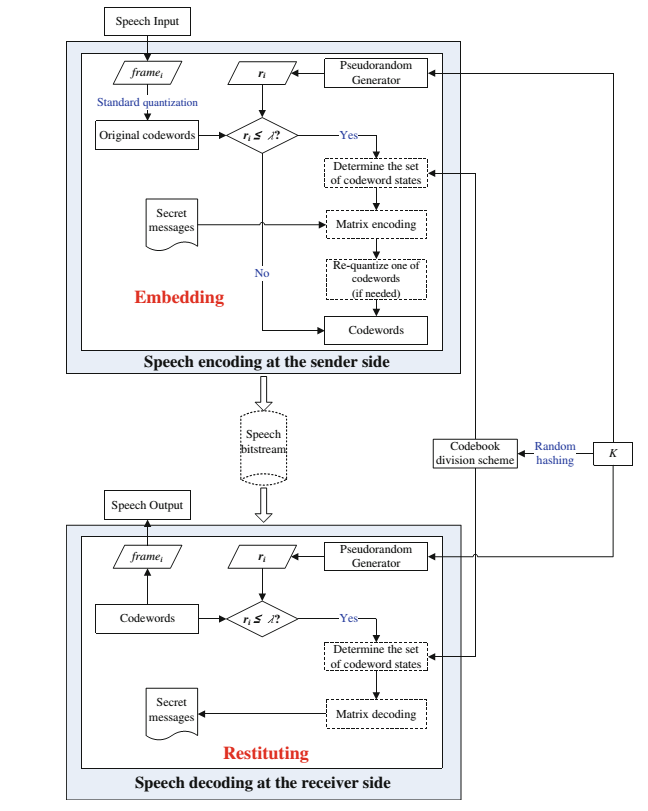During the past few years, steganography, which is an art and science of information hiding, has been developed from limited applications to extensive deployments. The steganographic covers have also been extended from images to almost all multimedia. As a new steganographic cover, Voice over Internet Protocol (VoIP) has attracted significant attention in recent years. VoIP is a popular technique to enable telephone calls via a broadband Internet connection, and has become an alternative to the public-switched telephone network.
So far, a great number of steganographic approaches for VoIP have been proposed. Among them, the quantization-index-modulation (QIM) steganography is co-researched by National Huaqiao University, Huazhong University of Science and Technology and Institute of Acoustics, Chinese Academy of Sciences.
The QIM steganography is concentrated in low bit-rate speech streams and its security is to be improved afterwards. Generally, contributions of this research are twofold. First of all, it exploits the characteristic of codebook division diversity in the complementary neighbor vertices (CNV) algorithm. A key-based codebook division strategy is first designed, which dynamically determines the adopted codebook division scheme according to the given key. Compared with the previous CNV-QIM, the approach follows Kerckhoff’s principle and thereby enhances the security. Besides, to resist the state-of-the-art steganalysis, random position selection is introduced to dynamically adjust the embedding rate, and matrix encoding strategy is employed to enhance the embedding efficiency.
The proposed secure QIM (Sec-QIM) (see Fig. 1) is evaluated with ITU-T G.723.1 as the codec of the cover speech and compared with the previous research. The experimental results show that the Sec-QIM outperforms the previous CNV-QIM steganography on both steganographic transparency and steganalysis resistance. In particular, the state-of-the-art steganalysis is ineffective, if Sec-QIM is performed with an embedding rate lower than 30 %.

Fig. 1 The proposed secure QIM steganography (Image by TIAN).
Although the Sec-QIM has to reduce the embedding rate to improve the steganographic security, it is considered as a worthwhile expense, as security is the lifeline of steganography. Also, it would like to be pointed out that, the lengths of speech streams in VoIP scenarios are variable and dynamic, so they can often supply enough cover data according to the steganographic requirement. In this sense, a relatively low embedding rate is not a very significant concern in applying Sec-QIM to VoIP streams. Further, since Sec-QIM essentially improves steganographic transparency and security by reducing the cover changes, this research once again verifies the general belief that fewer and smaller changes are less detectable and more secure.
This research was supported in part by the Natural Science Foundation of Fujian Province of China under Grant No. 2011J05151, the Fundamental Research Funds for the Central Universities under Grant No. JB-ZR1220, the Scientific Research Foundation of Huaqiao University under Grant No. 11BS210, the Natural Science Foundation of China under Grant No. 61202468, and the Platform Construction Project for Scientific and Technological Innovation of Fujian Province of China under Grant No. 2012H2101.
Journal References:
TIAN Hui, LIU Jin and LI Songbin. Improving Security of Quantization-index-modulation Steganography in Low Bit-rate Speech Streams. MULTIMEDIA SYSTEMS (vol. 20, no. 2, pp. 143-154, MAR 2014). DOI: 10.1007/s00530-013-0302-8


